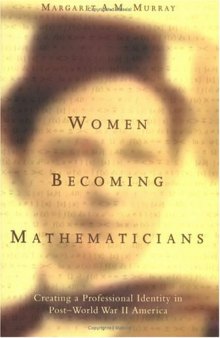 جزییات کتاب
جزییات کتاب
Women Becoming Mathematicians looks at the lives and careers of thirty-six of the approximately two hundred women who earned Ph.D.s in mathematics from American institutions from 1940 to 1959. During this period, American mathematical research enjoyed an unprecedented expansion, fueled by the technological successes of World War II and the postwar boom in federal funding for education in the basic sciences. Yet women's share of doctorates earned in mathematics in the United States reached an all-time low. This book explores the complex interplay between the personal and professional lives of those women who embarked on mathematical careers during this period, with a view to understanding how changes in American society during the 1950s, 1960s, and 1970s affected their career development and identities as mathematicians.The book is based on extensive interviews with thirty-six women mathematicians of the postwar generation, as well as primary and secondary historical and sociological research. Taking a life-course approach, the book examines the development of mathematical identity across the life span, from childhood through adulthood and into retirement. It focuses on the process by which women who are actively involved in the mathematical community come to "know themselves" as mathematicians. The women's stories are instructive precisely because they do not conform to a set pattern; compelled to improvise, the women mathematicians of the 1940s and 1950s followed diverse paths in their struggle to construct a professional identity in postwar America.



 دانلود کتاب
دانلود کتاب

 جزییات کتاب
جزییات کتاب





 این کتاب رو مطالعه کردید؟ نظر شما چیست؟
این کتاب رو مطالعه کردید؟ نظر شما چیست؟
